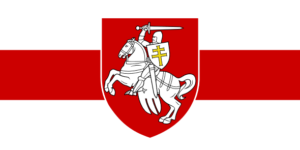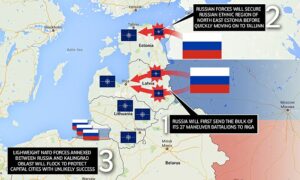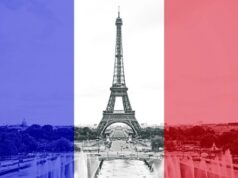After 26 years of President Lukashenko’s dictatorship, mass protests have broken out across Belarus. But will the country finally be truly free from the Russian Bear that has dominated it for most of its history, and why is Belarus so important to Russia?
Belarus has always had a strange relationship with its neighbours (Poland and Russia), having been invaded and controlled by both to varying degrees before and throughout the 20th century, with only brief periods of independence. The country has even been divided between the two powers, with their own language being effectively banned and culture almost wiped out.

Lukashenko has been Belarus’s only president, winning every election since 1994, this being his sixth term. He has also won one referendum on dissolving the Parliament if he felt it didn’t comply with the country’s constitution and another to increase his powers substantially, including extending his term limits beyond five years until 2001.
Following the recent election, President Lukashenko is alleged to have won with 80% of the vote in the first round, with his opponent, Sviatlana Tsikhanouskaya, gaining only 10%. According to Ms Tsikhanouskaya herself, however, she received around 60% to 70% of the vote.
After the election result announcement, thousands of Belarusian citizens came out to protest the result (the largest protest since the country’s independence, according to local news sites), taking to the streets of the capital. They carried placards slandering Lukashenko and calling for free elections, with some waving the flag of the Opposition, used by the country historically to represent its freedom and national pride.

In the past few weeks, the protests have grown dramatically, with workers in state enterprises walking out and the pro-Lukashenko state broadcaster walking out as well. Police have cracked down harshly against protesters, using rubber bullets and water cannons, with thousands being arrested and injured by them. So far, 4 people have confirmed to have died. Lukashenko himself has taken to wearing body armour and carrying an assault weapon. Russian President Vladimir Putin has also offered to send additional police to help quell the protests.
The geographical position of Belarus is critical to Russia and Putin’s European foreign policy objectives. Belarus has an area of 207,595km and is the closest single country connecting Russia to its semi-exclave of Kaliningrad (administered as part of mainland Russia).
Kaliningrad is sandwiched between Lithuania to its north and east and Poland to its south. It has a coastline along the Baltic sea spanning 145km. This is Russia’s only European port, which is ice-free all year round and as a result contains the country’s Baltic fleet and subsequent naval subdivision HQ.

The exclave is separated from Belarus by the Polish-Lithuanian border via a strip of land known as the Suwalki Gap. The gap approximately 65 miles long is the only land border between the EU/NATO-aligned European mainland and the three EU/NATO Baltic states.

The gap has always been vulnerable to dominance by certain powers, which both sides realise and are therefore working hard to outmatch each other. NATO placed a military base on the Polish side of the border near the gap, and (as of 2016) supplied mechanised battalions totalling 4,500 troops to Poland and the three Baltic states. Poland was also given a number of their most advanced fighter jets (the F-35), and NATO military exercises regularly take place there, with a particular focus on the region in 2017 as part of its ‘Enhanced Forward Presence’ initiative.
In response, Russia, as well as having their Baltic navy camped in Kaliningrad, also has 20,000 soldiers, 800 tanks, 1,200 armoured vehicles, 200 aircraft/helicopters and 345 artillery systems, including S-400 and Iskander nuclear-capable missiles as part of their A2AD (Anti-Access/Area Denial) strategy. Plans have also been put forward to build a Russian military base in Belarus.

In order to have more control over the fragile situation and reduce the influence of the West, Putin has been gradually pushing for a union between the two nations. This is also part of his vision of reintegrating former Soviet states into the Russian sphere of influence. He has referred to the collapse of the Soviet Union as “the greatest geopolitical catastrophe” of the 20th century.
So far, the two countries have already created a customs union and a Russian version of the EU’s Schengen Area. A common currency was proposed in 2004, but was pushed back each time, with the Belarusian ruble being pegged to the US dollar as of 2008, according to the country’s national bank. Lukashenko has delayed implementing Bills relating to the union because he knows he would become irrelevant to Russia. As a result, he is playing both sides of Europe to his advantage. But has his time finally run out?
Although the current protests may at first appear similar to the pro-democracy protests in Ukraine in 2014, Belarus is quite different. Belarus is not anti-Russian, like Ukraine was, but more anti-Lukashenko. This, therefore, requires Putin to use different ‘solutions’ to fix it. Rather than annexing parts of the country, Putin is likely to use some form of political leverage (if propping up Lukashenko goes sour) to try and replace the leader with someone who is a lot more sympathetic to the notion of a union and Putin’s overall vision.



